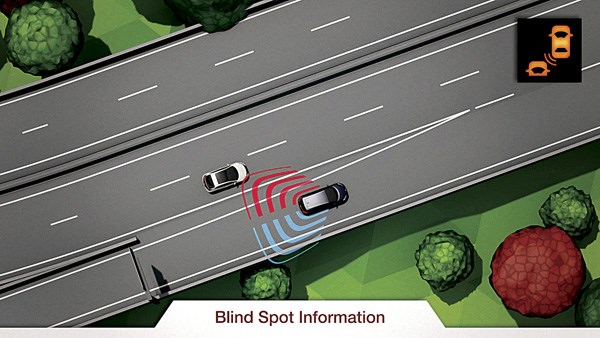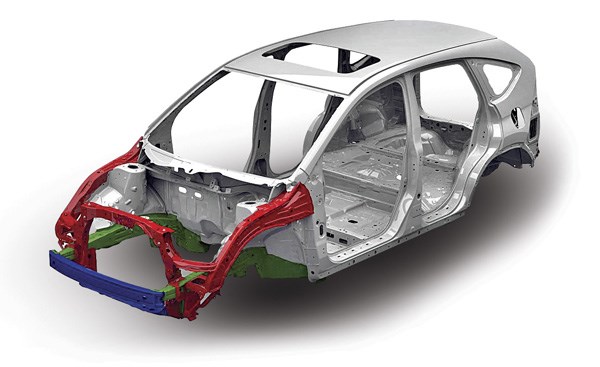Promotional feature: Car tech talk 3
Promotional feature: We take you on a journey on how technology transforms an idea into a fully functional automobile.
Published On Feb 23, 2015 04:40:00 PM
3,203 Views
Follow us onSafety. Technology that saves lives.
In Part Three of our series on automotive technology, we cover an aspect that is essential to preserving life. Whether it’s the simple head restraint or advanced technology that controls G-forces during a collision, advances in safety help make cars safer for occupants and pedestrians. Let’s find out how.
The key to safety
Seat belts, ABS, crumple zones, ESP and airbags are terms thrown around when automotive safety is discussed. But what do they mean? In this
feature, we’re taking a detailed look at how safety features are being integrated into the cars that
are built today.
Classifying safety
Vehicular safety is broadly classified into two categories — active and passive safety.
The passive approach
Most people associate car safety with passive safety. Considering that most safety tests conducted by regulatory bodies are centred around these features, this is not surprising. Passive safety features are those that actually protect occupants and pedestrians in the event
of an accident.
A little restraint.
The most common of these features is the seat belt. Usually taken for granted and sometimes seen as an inconvenience, three-point seat belts in cars today are much more advanced than the fixed-length ones that were used originally. They allow for normal movement in the car but during an accident, they are designed to rapidly pull you back into the seat, let you out a bit and pull you back in again. The rest of the passive safety features are hard at work dispersing the energy of the impact simultaneously. In vehicles equipped with airbags, the seat belts and airbags are designed to work together. Now let’s get this straight. Airbags, despite the name, aren’t soft pillows or quilts. When sensors detect an impact, explosives are detonated to deploy airbags in very specific directions at specific speeds to cushion the impact on your body while seat belts keep you in place. It’s not uncommon to hear of injuries sustained even after airbag deployment. But carmakers are working to make airbags safer. Honda, for example, introduced the world’s first driver-side i-SRS airbag system with continually staged inflation. What this does is allows for a wider range of driver seating positions and collisions. It features spiral seams and a gas release control valve which optimally controls internal pressure to achieve prompt and low-impact deployment. This means that the driver receives protection sooner, for a longer duration and with a little less violence. Not to be overlooked are the seats and the headrests which are also designed to hold you in place and prevent cervical injury from whiplash.
Structuring safety.
In part two of this series last month, we covered how cars today do not have a traditional chassis but are built on a monocoque frame. One of the advantages of this structure is that safety features can be built right into it. Crumple zones, for example are an important part of this. This technology was originally developed and patented by Mercedes-Benz in the 1950s and is one of the most critical features of passive safety. Crumple zones work by absorbing crash energy into the outer parts of the vehicle, resulting in their deformation and directing energy away from the cabin. The cabin, as a result, does not deform and intrusions into this part of the car are also avoided, thus protecting the occupants against injury. Crumple zones are usually found in the front and at the rear of the vehicle. In the 1990s, Volvo took this a step further by developing Side Impact Protection Systems or SIPS or a side crumple zone. Another manufacturer, Honda, has developed a technology it calls G-CON which aims to protect car occupants by controlling G-forces during a collision. This works in conjunction with the proprietary Advanced Compatibility Engineering or ACE body structure technology to enhance occupant protection in a frontal collision. ACE utilises a network of connected structural elements with an improved design and greater use of high-tensile steel. This distributes crash energy evenly through the upper and lower structural elements including the floor frame rails, side sills and A-pillars. It also features specifically engineered pathways which distribute impact forces through a greater percentage of the vehicle’s total structure while channelling them away from the cabin. Such cabin reinforcement is the reason you see thicker A-pillars and higher window lines in cars today. Additionally, doors are reinforced to protect from side impacts. Fuel tanks are constructed and mounted in a way that reduces the chance of rupture and spillage during an accident. And steering columns are also designed to collapse and engines are mounted in a manner that lets them break away and slide under the car in case of a major impact. Almost everything in a modern car is designed to break, absorb or deflect energy in a manner that keeps its occupants safe.
Amazingly Active
While passive safety features keep occupants safe during an accident, it’s just better to avoid getting into one. That’s where active safety features come in. They help prevent accidents.
Towards stability.
It is fortunate that active safety features like Anti-lock Braking Systems or ABS and Electronic Stability Programmes or ESPs are becoming relatively inexpensive for manufacturers to install on their vehicles. These significantly enhance vehicle stability. ABS keeps the brakes from locking up the wheels in case of hard or panic braking. ESP is a smart system which recognises when control is compromised. It then delivers power to the wheels in a way that lets the driver maintain control and steer the car away from danger. Some vehicles also come with a hill climb assist feature which keeps the car from rolling back on inclines. Then there are proximity sensors and reversing cameras which warn the driver when an object is close to the car. These systems make the behaviour of the car predictable and help the driver maintain control, thus reducing the chance of an accident.
Adaptive assistance.
The features mentioned above have been around for a while, but there are a host of new active safety features which manufacturers are introducing. Honda, for example, calls its active safety system “Honda Sensing”. This advanced driver assistive system consists of a millimetre-wave radar inside the front grille and a monocular camera mounted on the upper, inside part of the windshield. The system features a Collision Mitigation Braking System which detects a vehicle or pedestrian in front of the car, provides audio and visual warning and gently applies brakes when there is risk of a collision. The monocular camera also provides a lane assist feature which detects when the car strays from its lane without indication. If it detects that the car has strayed away from the lane and is about to hit a pedestrian, it even actively steers away while providing signals to the driver in the form of an alarm, visual display and vibration on the steering wheel. It recognises traffic signs and updates the driver about them on the multi-function display. There’s adaptive cruise control which detects the distance and speed of the vehicle ahead and maintains a safe distance. Honda also has a night vision system that helps drivers see farther at night and it even recognises shapes of people and animals that would normally not be visible and alerts the driver. Though these features aren’t available around the world yet, it’s only a matter of time before they come as standard.
Important basics.
Active and passive safety features help considerably in making cars safe. The list of features available can get quite long. There are, though, those basic, simple things that when well maintained, seriously improve safety on the road. And though this technology continues to evolve, it has been around since cars were first made — tyres, wheels and brakes. When these three are maintained well and the person behind the wheel is alert, safety for the occupants and pedestrians is effectively enhanced. Everything else, comes after.
Copyright (c) Autocar India. All rights reserved.






Comments
Member Login
Personal Details
No comments yet. Be the first to comment.